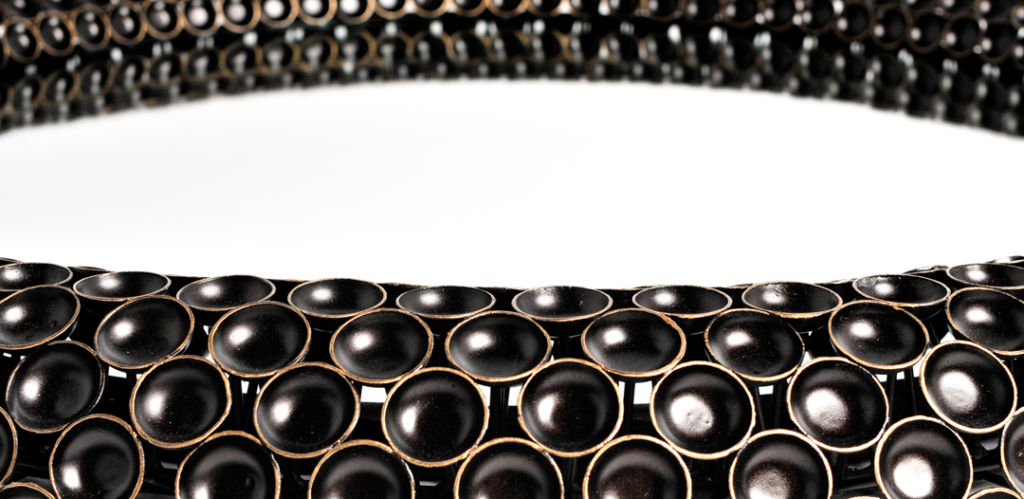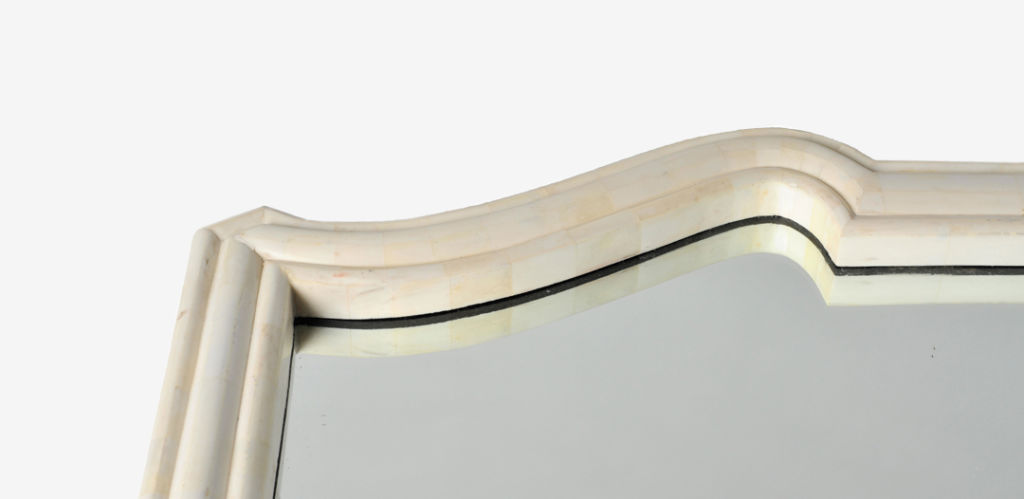Reflections of Style – The Magic of Mirrors in Our Homes
While we use mirrors every single day of our lives (providing you don’t live in a Transylvanian castle and sleep in a coffin) not many people know how they’re actually made. The creation of mirrors begins with a single sheet of clear glass, commonly referred to as a “lite”. The lite is placed onto the silver line and proceeds through a physical washing process. Liquefied tin is sprayed onto the surface of the cleaned lite during the Tinning process. As silver will not adhere directly to glass, an ultra-thin layer of tin is first applied (tin will bond both to glass and silver). As its name suggests, the Silvering process involves liquefied silver being applied to the tinned lite – which gives mirrors their reflective qualities. A liquid copper solution consisting of copper sulfate, sulfuric acid, and iron powder is applied to the lite to protect the silver layer from corrosion. This is called, you guessed it, the Coppering process.
Mirrors help turn any interior decorator into a magician. Accessorizing our homes with mirrors is a surprisingly simple and effective way of creating specific illusions to achieve a multitude of purposes. Is your living space a bit cramped? Do you have a particular room without windows? A certain corner that never seems to get enough light? Using mirrors can solve all of these issues and then some.
Hello, Darkness, My Old Friend
To let the light in, simply place a mirror opposite or next to a window to amplify the amount of natural light cast into the room. A mirror will harness any daylight possible (no matter how gloomy the sky is outside) so the bigger the mirror, the brighter the space. Not enough? Mirrors also effectively double up your light sources, so if you’re challenged with illuminating a cavernous space, place your mirrors near lamps to reflect their brightness.
The Art of Distraction
Mirrors are a cunning way to deceive the eye to enhance something – or deflect attention away from it. Awkward spaces, such as rooms with a sloping ceiling or a gap too small to fit a piece of furniture, can be repurposed with a mirror.
The More, The Merrier
Did you know that mirrors are a brilliant way to boost the atmosphere in your entertaining space? Placing a large mirror against a wall can create the illusion that there’s more room – and guests – at a gathering.
The Center of Attention
In rooms where there isn’t a fireplace or mantelpiece to position your furniture around, a mirror is a great tool for dictating the center of the room. And in homes where there does happen to be a fireplace, it only serves to exaggerate the impact of the mirror’s presence. In fact, a mirror with an ornately carved frame works just as well as a painting when it comes to choosing decorative art for your home.
Now that we’ve covered a few creative ways mirrors can breathe new life into old spaces, let’s go over the common types of mirrors that can be used to enhance just about any interior design you can think of…
Plane Mirror — A plane mirror is a flat mirror that sends light out from itself in multiple directions, by either reflection or emission. The point where the reflected light beams intersect is where the image is formed, which is always the same size as the original object.
Concave Mirror — Concave mirrors are spherical mirrors that curve inward like a spoon, so that the reflective surface resembles the interior of a bowl, bending inward. They create the illusion of largeness and are typically found in bathrooms and bedrooms.
Convex Mirror – Convex mirrors are also spherical mirrors, in which the reflective surface bends out, like the exterior profile of a bowl. However, unlike concave mirrors, they bulge out and distort the reflected image, making it smaller.
Gold Veined Mirrors – Gold veined mirrors are unique in the way they look and are made. The gold veins that appear on the face of the mirror invoke a more vintage 1960s feel, especially when accompanied by an ornate frame.
Tinted Mirrors – These mirrors are perfect for places where you want to make an impact and create a strong impression, because you can choose from green, blue, brown and other options. These mirrors are available in virtually any color you can think of and are best suited for larger walls.
Beveled Mirrors – Beveled mirrors are definitely the ideal decorative items when it comes to combining minimalism and simplicity with elegance. Because of their tapered edges, the middle parts of these mirrors are thicker than their edges, which have been beveled. This is a simple technique that turns an ordinary mirror into something that instantly grabs your attention.
Etched Mirrors – Etched mirrors are the mirrors with unique shapes and patterns on them that are created using a couple of different techniques. You can decide whether you want the whole surface of your mirror to be etched or just the sides, depending on if you want the mirror to serve as a practical mirror or pure decoration.
Antique Mirrors – These mirrors have been put through certain processes and treatments to create an antique look. This worn-in aesthetic makes them a great decorative item to juxtapose with modern homes. Certainly, an antique mirror becomes even more attractive when accompanied with an antique frame.
Clearly, mirrors offer limitless potential when it comes to adding light, dimension and visual sparkle to any living space. When employed with strategy and creativity, they can both define and redefine the environments which they adorn.
_________________________________
ERIC BRAND
Founded in 1996 and based in San Francisco, Eric Brand offers custom-styled furniture and worldwide sourcing along with exquisite materials and finishes, specifically for the high-end residential design market and hospitality industry.
JUNIPER
Named after the fog-licked Juniper trees on the hills of San Francisco, Juniper is an in-stock furniture collection by Eric Brand that pays homage to timeless materials, techniques and silhouettes – brought to life through expert craftsmanship.


